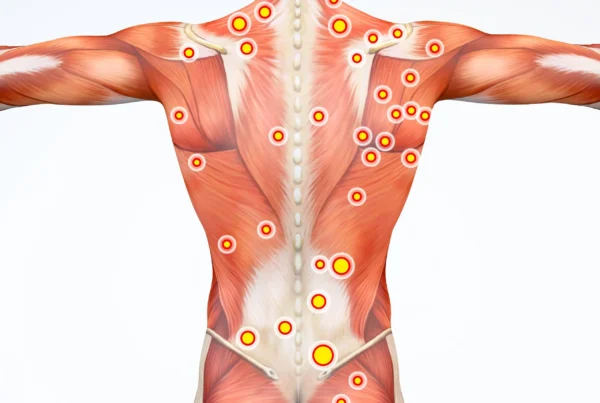By Dr Jeremy Balbin (Chiropractor)
Recent injury? Managing an old injury? Dealing with long term nagging aches and pains? Wondering if you can go back to the gym and start exercising again?
This is a common question that I get as a Chiropractor, both from my patients and general members of the public. People are worried that getting back to exercising will just make their pain and condition worse. To answer this question, there are a few things that must first understand.

The first and most important thing is that pain does not provide a measure of the state of tissues (1). So that means that the pain you are experiencing does not give a good indication of the harm that has happened. Pain is determined by a number of different factors, and the field of pain science is continuing to grow in terms of size and importance. Another important thing to understand is that the relationship between pain and the state of the tissues becomes less predictable as pain persists. This means that the pain felt by chronic pain sufferers, (people with longer term pain) is even less related to the actual state of their tissue.
We could spend this entire article talking about pain science, but that is not what this is about. I want to articulate that it can be safe to get back into the gym and get back exercising even though you are still experiencing pain, and it can even be a good thing! This was shown in a 2017 systematic review by Smith et al. (2). Comparing protocols using painful exercises vs non-painful ones, it demonstrated that individuals suffering chronic pain (present for more than 3 months) who performed exercises with some level of pain present, reported significantly lower levels of pain in the short term over individuals who performed completely pain-free exercises. Furthermore, they said that Pain during therapeutic exercise for chronic musculoskeletal pain need not be a barrier to successful outcomes.
Another more recent study in 2019 by Hickey Et Al. (3) asked the question about whether following a standard rehab protocol after having a Hamstring Strain Injury within either pain-free or pain-threshold limits made a difference to return to play time, isometric knee flexor strength, biceps femoris long head (BFlh) fascicle length, fear of movement and re-injury. While Pain-threshold rehabilitation did not accelerate RTP clearance but did result in greater recovery of isometric knee flexor strength and better maintenance of BFlh fascicle length improvements compared to pain-free rehabilitation.
So what does this all mean?
Well for one, it can be safe to exercise with pain. This can be split into two types of exercising. The first is the type of exercise that doesn’t cause any pain, so training other areas. For example, if you have lower back pain, then looking for exercises that that don’t aggravate the lower back, such as inclined push ups, bench press, assisted chin up, leg press and so on can help maintain your fitness and strength whilst keeping you comfortable at the same time.
However, as has been discussed above, exercising with pain (but within a pain-threshold) can actually have beneficial effects to short term pain and long term function and healing. In a study in 2007 by Silbernaggel Et Al. (4) having a look at rehabilitation protocols using a pain-monitoring model for Achilles Tendinopathy, showed no negative effects from Achilles tendon-loading activity, such as running and jumping, with the use of a pain-monitoring model. In fact, the treatment protocol for patients with Achilles tendinopathy, which gradually increases the load on the Achilles tendon and calf muscle, demonstrated significant improvements. Those who performed the rehab with some pain showed greater symptomatic improvements than those who did it pain-free.
So how do you exercise with pain?
The below guide can be used for exercising with pain. The way it works is that you give your pain a rating of 0-10, with 0 being no pain at all and 10 being the worst possible pain. If you are in the 0-3 range, it is safe to train and maybe even increase loads. If you are in the 4-5 range, it is ok to train, but keep the load the same. If the pain is 6 and above, then it is best to modify what you are doing.

It is also important to know that your pain/symptoms should settle quickly back to baseline levels after exercise (within 24 hours) and you should not feel an increase in pain or stiffness the following morning. Factors such as training intensity and frequency may need to be modified if you are not returning to baseline quickly enough.
Your body is resilient and adaptable. Loading your muscles and joints when rehabilitating is important in try to achieve a return to full function and being pain free. It is important to stay within safe zones but trust your body and its resilience and adaptability and remember that the pain you experience does not always mean damage has been done or is being done. However, while the above guide can be really helpful, it is important to see a health professional (such as a Chiropractor) to get an accurate diagnosis and find out if it is indeed safe to exercise with your pain.
In summary:
- Pain does not provide a measure of the state of tissues
- Exercising and rehabbing with pain is often safe and can even be a good thing
- Keeping active while in pain or injured is important, even if you are training other areas of your body
- When exercising and rehabbing, if your pain is less than 5/10, it is safe to continue. If it is 6/10 and over, you need to modify what you are doing
- Make sure you get an accurate diagnosis from your health professional
Centre 4 Health – All your health needs in one place
Can you exercise with pain?
Centre 4 Health
Chiropractor Caulfield
368B Hawthorn Road
Caulfield South
VIC 3162
References
- Moseley G. Reconceptualising pain according to modern pain science. Physical Therapy Reviews. 2007;12(3):169-178.
- Smith B, Hendrick P, Smith T, Bateman M, Moffatt F, Rathleff M et al. Should exercises be painful in the management of chronic musculoskeletal pain? A systematic review and meta-analysis. British Journal of Sports Medicine. 2017;51(23):1679-1687.
- Hickey J, Timmins R, Maniar N, Rio E, Hickey P, Pitcher C et al. Pain-Free Versus Pain-Threshold Rehabilitation Following Acute Hamstring Strain Injury: A Randomized Controlled Trial. Journal of Orthopaedic & Sports Physical Therapy. 2019;:1-35.
- Silbernagel K, Thomeé R, Eriksson B, Karlsson J. Continued Sports Activity, Using a Pain-Monitoring Model, during Rehabilitation in Patients with Achilles Tendinopathy. The American Journal of Sports Medicine. 2007;35(6):897-906.226.451






